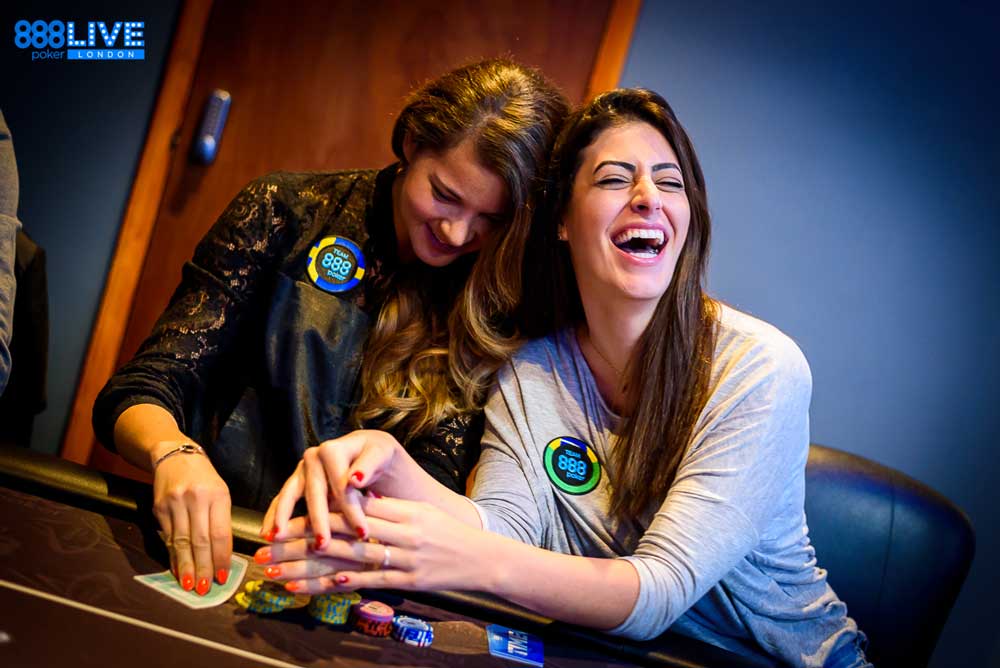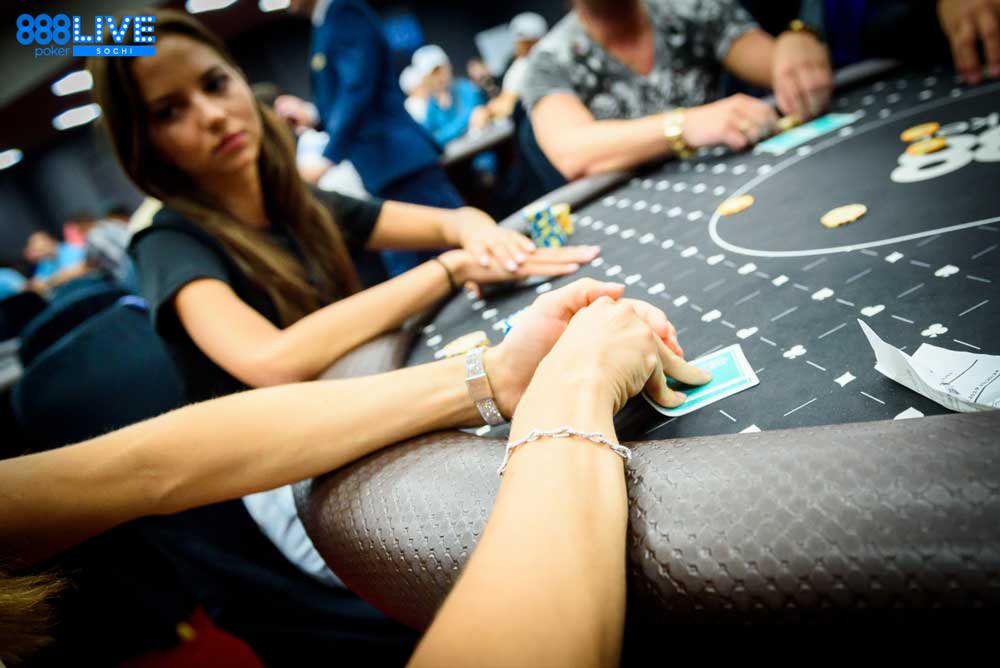In poker, side betting refers to bets made separately from the primary outcome in a poker game. Side bets are most commonly agreed between two players. But there are specific instances where bets of this nature might include everyone at the table!
In essence, side betting ultimately helps spice up the action with the additional “gambling” bet.
In this article, we’ll delve deep into everything you need to know about side bets/prop bets, including the following:
What is a Side Bet in Poker?
A side bet is sometimes called a “prop bet” – short for proposition bet. It is a bet made regarding something taking place or occurring that is separate from (but often related to) the primary outcome.
In the purpose of a poker game, this could mean:
- Which cards that a player will be dealt
- What cards that will come on the flop (or turn/river)
- Who will have the biggest Day 1 stack at the end?
- Which player will last longer in a poker tournament?
 What is a Side Bet in Poker?
What is a Side Bet in Poker?
There can also be side bets occurring outside of the scope of the current poker game:
- A side bet placed on a sports game:
- Which team will get possession first?
- Which team will score first?
- Which player will score the first goal?
- “One-of-a-Kind” bets (more frequently called “prop bets” than “side bets”)
- A poker player must perform or accomplish a specific task or activity within a particular time frame.
We should note that side bets are more frequently luck or chance related. They don’t often include an element of skill.
That said, particular bets (like “one-of-a-kind” prop bets) may include some human element to them. This factor bases them less on luck and more on the individual in question’s abilities.
The Purpose of Side Betting in Poker
There are many reasons to have and encourage side bets during a poker game:
- It keeps the game fun! It’s no longer only the repetitive process of going from one poker hand to the next. Instead, everyone involved now has an added way to win big or have an extra little payday.
 The Purpose of Side Betting in Poker - FUN
The Purpose of Side Betting in Poker - FUN
- Side bets are usually surrounding more chance-based occurrences. So, everyone has an equal chance of winning as they get their gamble on!
- Side bets typically encourage more of a “gambling” environment. It helps loosen up the players’ betting patterns and hand selection at the table. This situation drums up more action overall.
- While side bets are usually fun, they can also help give weaker poker players the added element of chance. They may turn (what would have been) a losing night into a breakeven or slightly profitable one!
Side Betting: Poker Examples
Here are some common examples of side bets that might happen during a poker game:
- Last Longer: This is a bet between two or more players involved in the same tournament. The winner of the bet is the last remaining player in the tournament (out of those participating in the last longer bet)
- Who Wins the Most Bracelets During a Series: Similar to the “last longer,” the winner is whoever has the most bracelets (or perhaps total cashes/money won/etc.) at the end of a tournament series.
- Flop Bets: These are truly luck-based side bets. They centre around what cards will come on the flop (or turn/river):
- Red/Black: Most commonly, flop-based side bets surround the predominant colour of the cards on the board. It can be any of the following scenarios –
- played every hand, based on whether the majority of the flop cards are red or black
- played only when all the cards are the same colour
- played only when all of the cards are in the same suit.
Sometimes, one prize amount is awarded if it’s all the same colour. Or an increased monetary amount comes into play if it’s all of a specific suit. This prize could also apply if players are playing a combination of the latter two options.
- Pick a Card: All involved players have a preselected “card” or a “card value” (i.e., 2 of Hearts, or perhaps all the 2’s in the deck). When that card comes on the flop, they win the side bet!
In some cases, this side bet might only be played/awarded for paired flops (2-2-K) or those with the same card value (7-7-7) – whatever the players agree upon in advance.
- Red/Black: Most commonly, flop-based side bets surround the predominant colour of the cards on the board. It can be any of the following scenarios –
- Last Man Standing: In this game, everyone at the poker table stands up. After you win a poker hand, you sit down. The last man standing up must then pay the predetermined side bet to everyone else who is now sitting.
- 7-2 Game: The Seven-Deuce game is a fun side bet game involving the entire table. Say you win a poker hand with 7-2 off-suit (at showdown or by making everyone else fold). Everyone else at the table must then pay you a separate predetermined amount for accomplishing this feat.
It’s a fun game to play to stir up action and keep your opponents guessing whether you have AA or 72o.
 Side Betting: Poker Examples
Side Betting: Poker Examples
- “One-of-a-Kind” Bets: These bets are more commonly referred to as prop bets and can sometimes occur during a poker game. But they may not even be related to the actual game itself! They can include players having to do something – usually some crazy feat or activity – to win the bet.
For example, in one episode of High Stakes Poker, Antonio Esfandiari had to do 35 push-ups in front of Nick Cassavetes and the rest of the table to win the one-off challenge.
Number of Players Involved in Side Bets
From the examples of side bets above, the number of players involved in each bet can differ from one bet to the next.
- Sometimes you have one winner and multiple losers.
- Other times, you have one loser with multiple winners getting paid.
Most often, though, side bets are made between just two players. You’ll see one ultimate clear winning player while the other has to pay up as the loser.
The Odds and The Payouts
The payouts surrounding side bets are usually easy to understand. A specific predetermined amount of money is set as the betting amount. Both players stand to win (or lose) that same amount of money.
Other times, there are particular odds that you need to factor into the betting. The amount one could win/lose may differ for some or all the parties involved (based on the odds).
For example, Vanessa Selbst bet Jason Mercier 180 to 1 odds that he wouldn’t win three bracelets during the 2016 WSOP.
- With those odds, if Jason didn’t win three bracelets, he’d pay Selbst $10,000.
- But if he won, then Selbst would have to pay him $1,800,000!
They agreed upon these money values and odds beforehand.
While Mercier was able to win two bracelets, he lost a heads-up match for the 3rd. He came up short, losing the bet to Selbst and $10k in the process.
|
NOTE: It’s essential to try and get good odds on a prop bet or a side bet. There is typically a lot of luck involved. So, it’s vital to take odds either in your favour or that you think are even-money. This scenario is especially crucial if you’re looking to profit from these bets in the long run. Get to a point where the odds and payouts are exactly alike. Then you can just sit back and aim to have fun. You can truly let chance dictate how much money you’ll win or lose with side bets. |
Real-Life Side Bets and Prop Bets in Action
You may have heard of a few examples of real-life side bets. Here are a few more that we think are notable:
- High Stakes Poker Side Bets: You’ll notice in Seasons 1 and 2 of GSN’s iconic TV show, High Stakes Poker, that there was a lot of side betting going on in the games. Players betting on cards, which flops would come out, etc.
It got to be so much that the network banned all side bets in a future season. They thought that the side bets were confusing and/or too distracting for the viewers at home.
- Staples Brothers Weight-Loss Bet: In 2018, businessman Bill Perkins made a 50 to 1 ($150,000 to $3,000) wager. He bet that Jamie Staples (304lbs/138kg) and his brother, Matt Staples (135lbs/61kg), wouldn’t be able to reach the same weight within one year. It was a crazy year for both, but they ultimately were able to meet the final goal and collect on a healthy payday!
Remember to Iron Out the Details
Bets like choosing colours for the flops or playing the Seven-Deuce game are pretty straightforward. But it’s critical to hash out the “fine print” of each side bet.
To avoid discrepancies down the line, ensure that all parties are clear beforehand on the following –
- The details of the bet
- What is permitted be done in the preparation and process of achieving/accomplishing/winning the bet.
Lastly, remember that “buyouts” are common, too. Say you think you’re in well over your head and unable to achieve the goal in the allotted time frame. You can always sit down with the other party and negotiate a buyout.
The Bottom Line: Summary
Betting in poker is quite different from the betting that occurs with side betting.
- Regular betting is a clear attempt to gain equity and win you money (the poker),
- Side betting is more to have a fun gamble (the side bets)
If you’re looking for even more action at the poker table, then be sure to throw in a few side bets here and there.
It will help stir up the action. Good luck!


